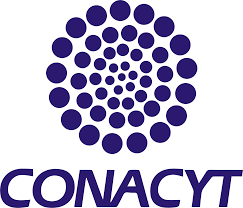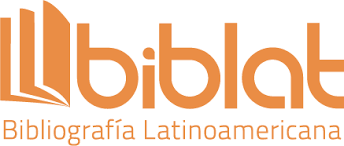Corporal reciprocities: lending the body to the dead in a Nahua community in the Huasteca region of Hidalgo
Keywords:
Nahuas, Body, Liminality, Embody, ReciprocityAbstract
In Chililico, a Nahua community located in the Huasteca region of Hidalgo state, Mexico, during the celebration of the Miljkailhuitl, or festival dedicated to the dead, the Cuahuehue dancers lend their bodies to the dead so that they can embody their existence. In this way, the dancers place themselves in a state of liminality by lending their body-tonacayo, to incarnate the dead, leading the dancers to juxtapose their personality with an “other” agent, during the days of the celebration.
Lending the body entails, from the Nahua perspective, the action of offering, tlamanalli, which leads to treating the data obtained through ethnography from the anthropological categories of reciprocity; since offering becomes the act upon which the relationship is based, this results in correspondence between the living and the dead: the experience of living.
Such a relationship of correspondence is jealous, since it requires that the living give corporality to the dead so that they can participate in the world, however, if the procedure is not carried out correctly, human life —and its body— run the risk of not being returned, thus being taken —together with the dead— to their world.
Downloads
References
Abduca, Ricardo Gabriel
La reciprocidad y el don no son la misma cosa, en Cuadernos de Antropología Social, 26. FFyL-UBA. Buenos Aires.
Acosta Márquez, Eliana
La constitución y deterioro del cuerpo. Una exploración etnográfica sobre la noción de persona a través de la relación del itonal y el chicawalistli entre los nahuas de Pahuatlán, Puebla, tesis de doctorado. ENAH. México.
Aguirre Beltrán, Gonzalo
Cuijla. Esbozo etnográfico de un pueblo negro. Fondo de Cultura Económica, SEP-Lecturas Mexicanas. México.
Báez Cubero, Lourdes
Mo´patla intlakwalle: el banquete en Todos Santos. Formas de reciprocidad entre los nahuas de la sierra de Puebla, en Procesos de escenificación y contextos rituales, Ingrid Geist (coord.). Universidad Iberoamericana-Plaza y Valdez. México.
Barfield, Thomas
Diccionario de Antropología. Siglo xxi Editores. México.
De Molina, Alonso
Vocabulario en lengua Castellana Mexicana y mexicana y Castellana. Porrúa. México.
Galinier, Jacques
La mitad del mundo. Cuerpo y cosmos en los rituales otomíes. UNAM, IIA, CNRS, CEMCA, UICEH. México.
Geist, Ingrid
Liminaridad, tiempo y significación. Prácticas rituales en la sierra madre occidental. INAH. México.
Introducción, en Antropología del ritual. INAH-ENAH. México: 5-12.
Heiras Rodríguez, Carlos Guadalupe
Cuerpos rituales. Carnaval, días de muertos y costumbres tepehuas orientales, tesis de maestría. ENAH. México.
Holbraad, Martin
Tres provocaciones ontológicas. Ankulegi. Revista de Antropología Social 18: 127-139.
Johansson, Patrick
Días de muertos en el mundo náhuatl prehispánico en Estudios de Cultura Náhuatl, 34. UNAM-IIH. México.
Lara González, José Joel
Humanizar lo mesoamericano, ponencia presentada en Simposio 8 Cuerpo y arte. V Congreso Mexicano de Antropología Social y Etnología (Comase). México.
López Austin, Alfredo
Cuerpo humano e ideología. Las concepciones de los antiguos nahuas. UNAM-IIA. México.
Mauss, Marcel
Sociología y antropología, Teresa Rubio de Martín-Retortillo (trad.). Tecnos. Madrid.
Millán Valenzuela, Saúl
La ceremonia perpetua. Ciclos festivos y organización ceremonial en el sur de Oaxaca. INI. México.
Pérez Castro, Ana Bella
Andanzas perversas por el mundo de los vivos en Península, 1 (2). UNAM. Mérida.
Los muertos en la vida social de la Huasteca. Itinerarios Revista de estudios lingu?ísticos, literarios, históricos y antropológicos, 15. México.
Pérez Téllez, Iván
El inframundo nahua a través de su narrativa. INAH. México.
Pury-Toumi, Sybille de
De palabras y maravillas. Centro de Estudios Mexicanos y Centroamericanos-Conaculta. México.
Questa Rebolledo, Alessandro
Visible dancers and invisible hunters. Divination and dancing among Masewal people in the northern highlands of Puebla, Mexico, en The Culture of Invention in the Americas Anthropological experiments with Roy Wagner, Pedro Pitarch y José Kelly (coords). Sean Kingston Publishing. Londres: 138-157.
Ries, Julien
Tratado de Antropología de lo Sagrado i. Los orígenes del homo religiosus. Trotta. Madrid.
Ríos Mendoza, Bruma
Danza y vida. Una etnografía de las danzas devocionales en San Miguel Tzinacapan, tesis de licenciatura en etnología. ENAH. México.
Danzas y cosmovisión en San Miguel Tzinacapan en Creando mundos entrelazando realidades. Cosmovisiones y mitologías en el México indígena, Good Eshelman y Alonso Bolaños (coords.). INAH. México.
Sahlins Marshall
Economía de la Edad de la Piedra. Akal. Madrid.
Sevilla Villalobos, Amparo
De Carnaval a Xantolo: contacto con el inframundo. Programa de Desarrollo Cultural de la Huasteca. México.
Trejo Barrientos, Leopoldo
Sonata ritual: cuerpo, cosmos y envidia en la Huasteca Meridional. inah. México.
Turner, Víctor
Dramas sociales y metáforas rituales en Antropología del ritual, Ingrid Geist
(comp.). INAH-ENAH. México.
Viveiros de Castro, Eduardo
Metafísicas caníbales. Líneas de antropología postestructural, Stella Mastrangelo (trad.). Katz. Buenos Aires.
Downloads
Published
Versions
- 2021-04-21 (2)
- 2020-11-04 (1)







